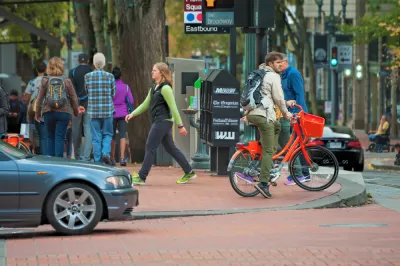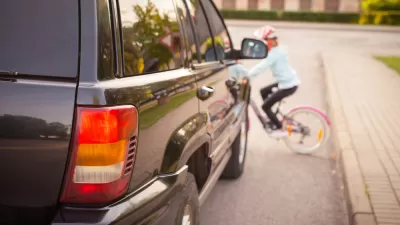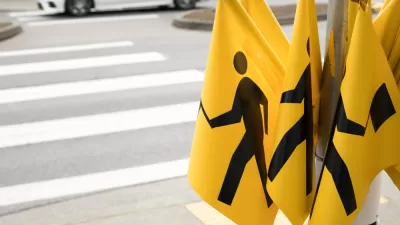In spite of the city's commitment to Vision Zero goals, more people died on Portland's streets than anytime in the last thirty years, with unhoused people most vulnerable to traffic violence.

According to an article from KATU, "Portland saw its highest traffic death toll in three decades, with 63 people killed in crashes on city streets throughout 2021." The recent Vision Zero report from the Portland Bureau of Transportation, where the statistic comes from, also noted that one in three people killed were experiencing homelessness (this number rose to 70 percent for pedestrian deaths). Black and Latinx populations were also overrepresented in traffic deaths.
Despite the city's stated Vision Zero goal, "Traffic deaths on state highways surged during the coronavirus pandemic, PBOT said, with 32 traffic deaths in 2021 compared to the average of around 17 over the previous four years." PBOT says that 60 percent of fatalities occurred in a small group of the city's most dangerous corridors, known as the High Crash Network, which includes 30 streets and intersections. "PBOT said this shows the need to continue to 'change the design of these streets to slow speeds and protect pedestrians.'"
Transportation commissioner Jo Ann Hardesty called Vision Zero a "work in progress," pointing to a recent emergency budget amendment that added $450,000 in funding to "rapid safety improvements" in the High Crash network.
The report also mentions the "complex set of social factors that have contributed to the spike in traffic deaths since the onset of the pandemic," citing "lack of shelter, medical care, and social services for houseless people" as contributing factors.
FULL STORY: Portland traffic deaths hit 30-year high, a third of those killed were homeless

Alabama: Trump Terminates Settlements for Black Communities Harmed By Raw Sewage
Trump deemed the landmark civil rights agreement “illegal DEI and environmental justice policy.”

Study: Maui’s Plan to Convert Vacation Rentals to Long-Term Housing Could Cause Nearly $1 Billion Economic Loss
The plan would reduce visitor accommodation by 25% resulting in 1,900 jobs lost.

Planetizen Federal Action Tracker
A weekly monitor of how Trump’s orders and actions are impacting planners and planning in America.

Wind Energy on the Rise Despite Federal Policy Reversal
The Trump administration is revoking federal support for renewable energy, but demand for new projects continues unabated.

Passengers Flock to Caltrain After Electrification
The new electric trains are running faster and more reliably, leading to strong ridership growth on the Bay Area rail system.

Texas Churches Rally Behind ‘Yes in God’s Back Yard’ Legislation
Religious leaders want the state to reduce zoning regulations to streamline leasing church-owned land to housing developers.
Urban Design for Planners 1: Software Tools
This six-course series explores essential urban design concepts using open source software and equips planners with the tools they need to participate fully in the urban design process.
Planning for Universal Design
Learn the tools for implementing Universal Design in planning regulations.
Caltrans
Smith Gee Studio
Institute for Housing and Urban Development Studies (IHS)
City of Grandview
Harvard GSD Executive Education
Toledo-Lucas County Plan Commissions
Salt Lake City
NYU Wagner Graduate School of Public Service





























